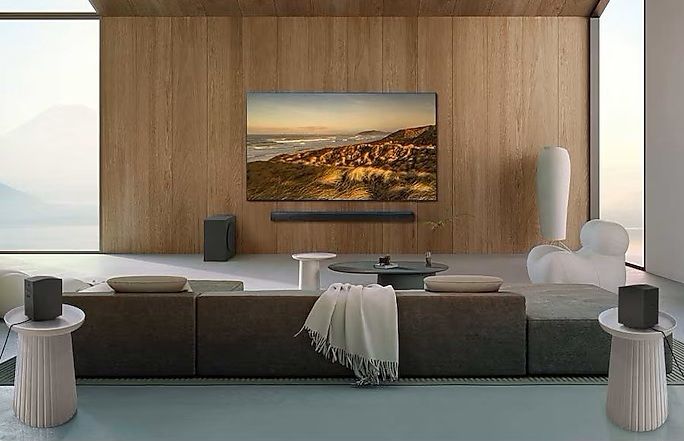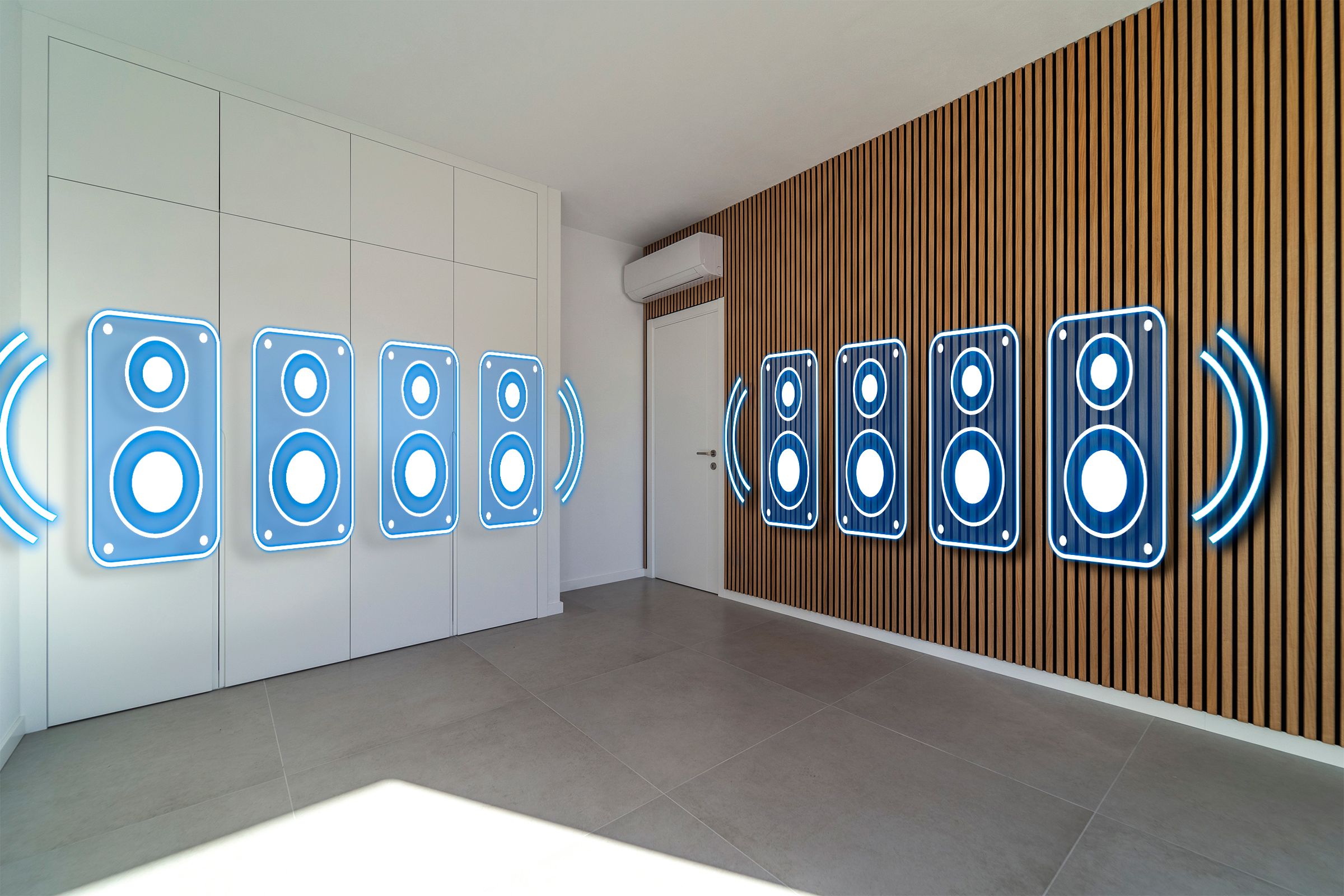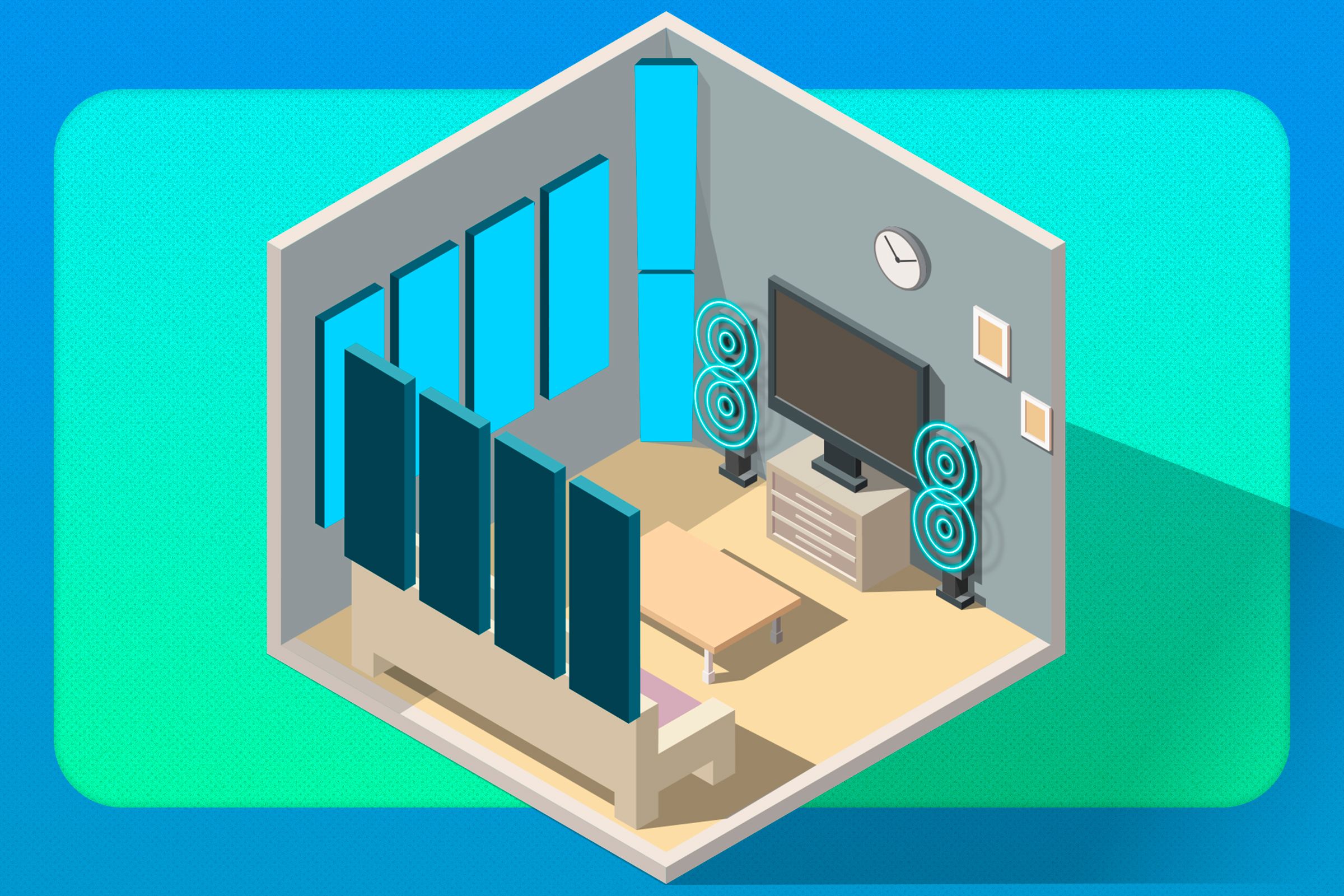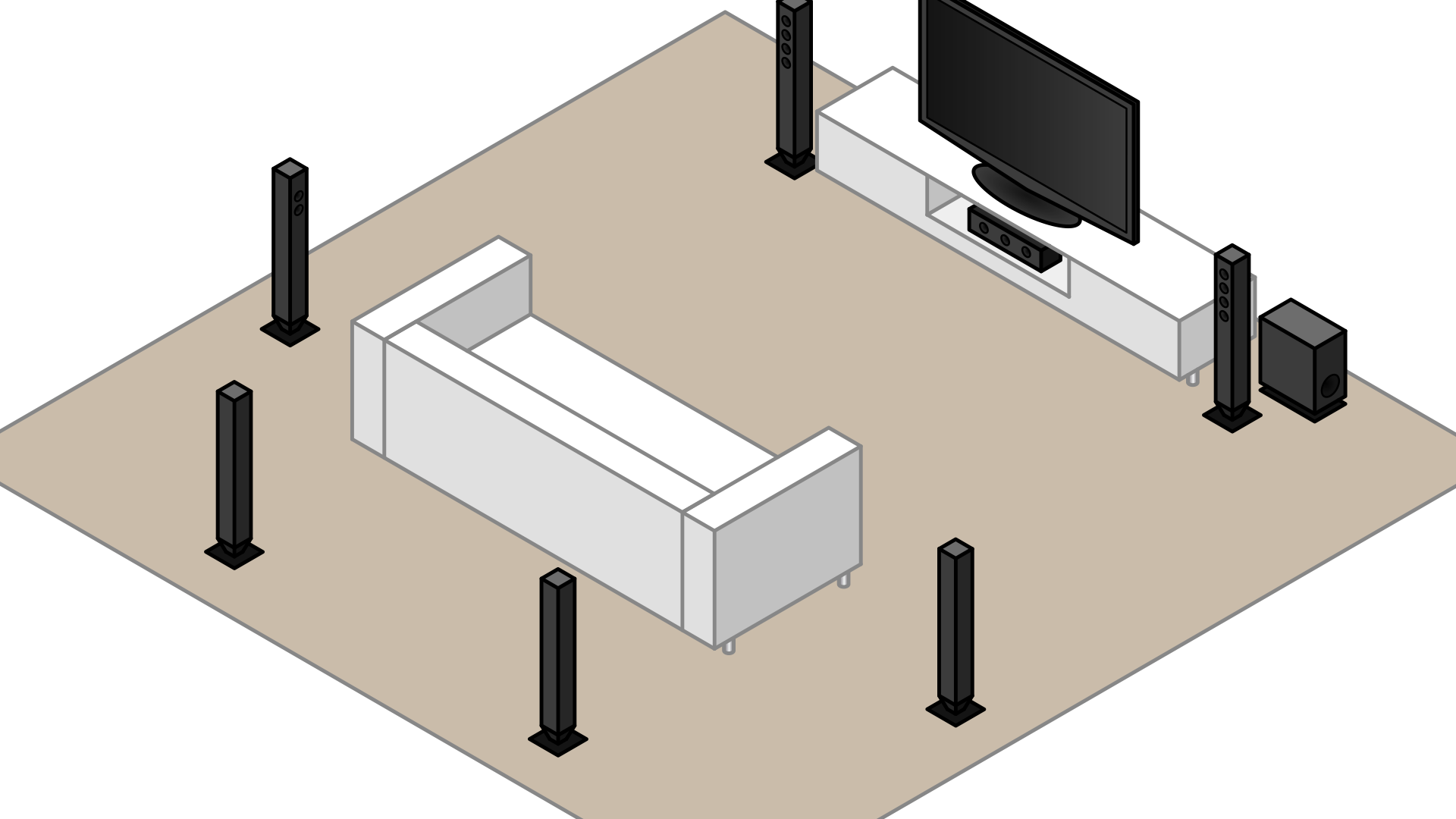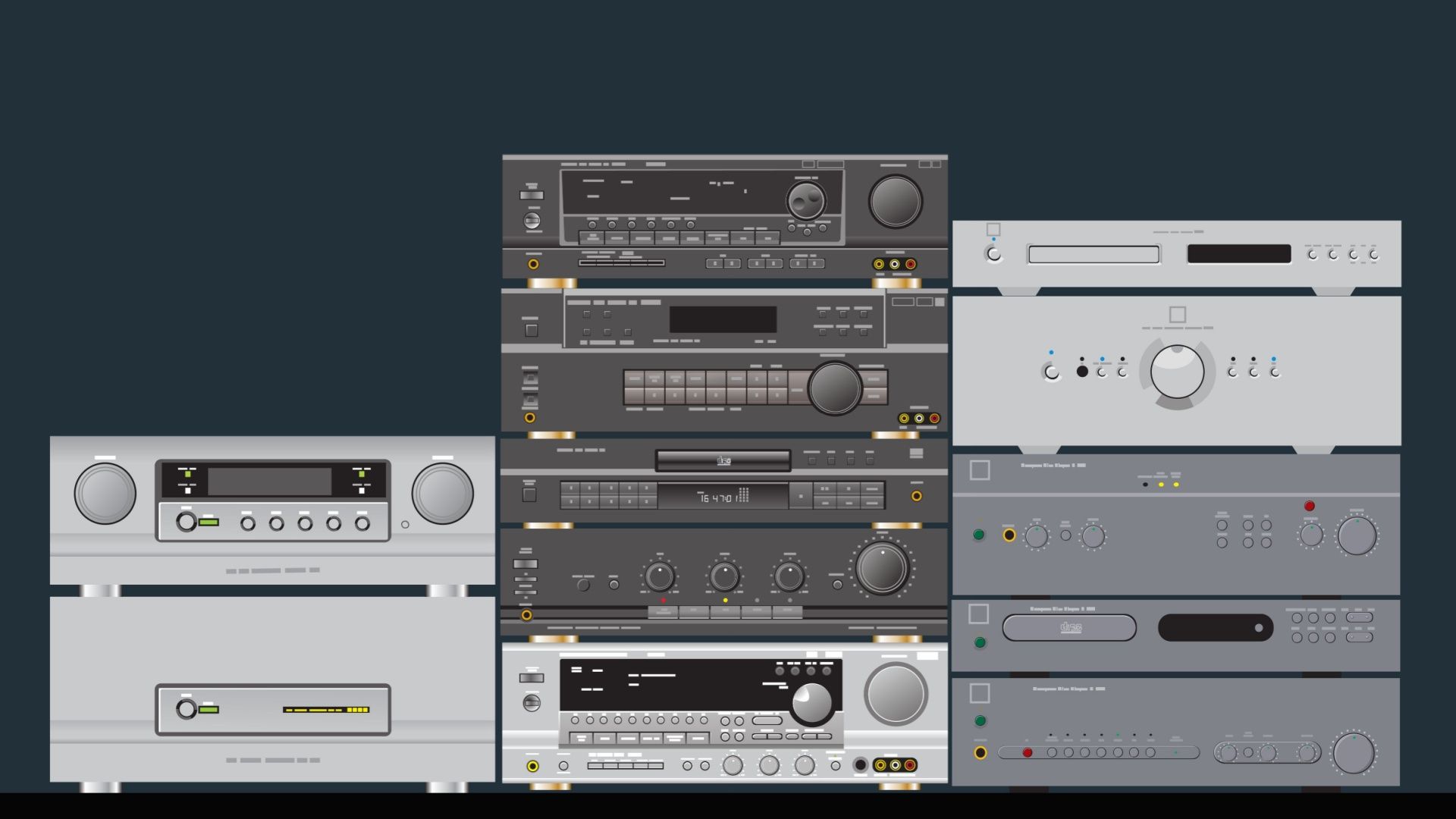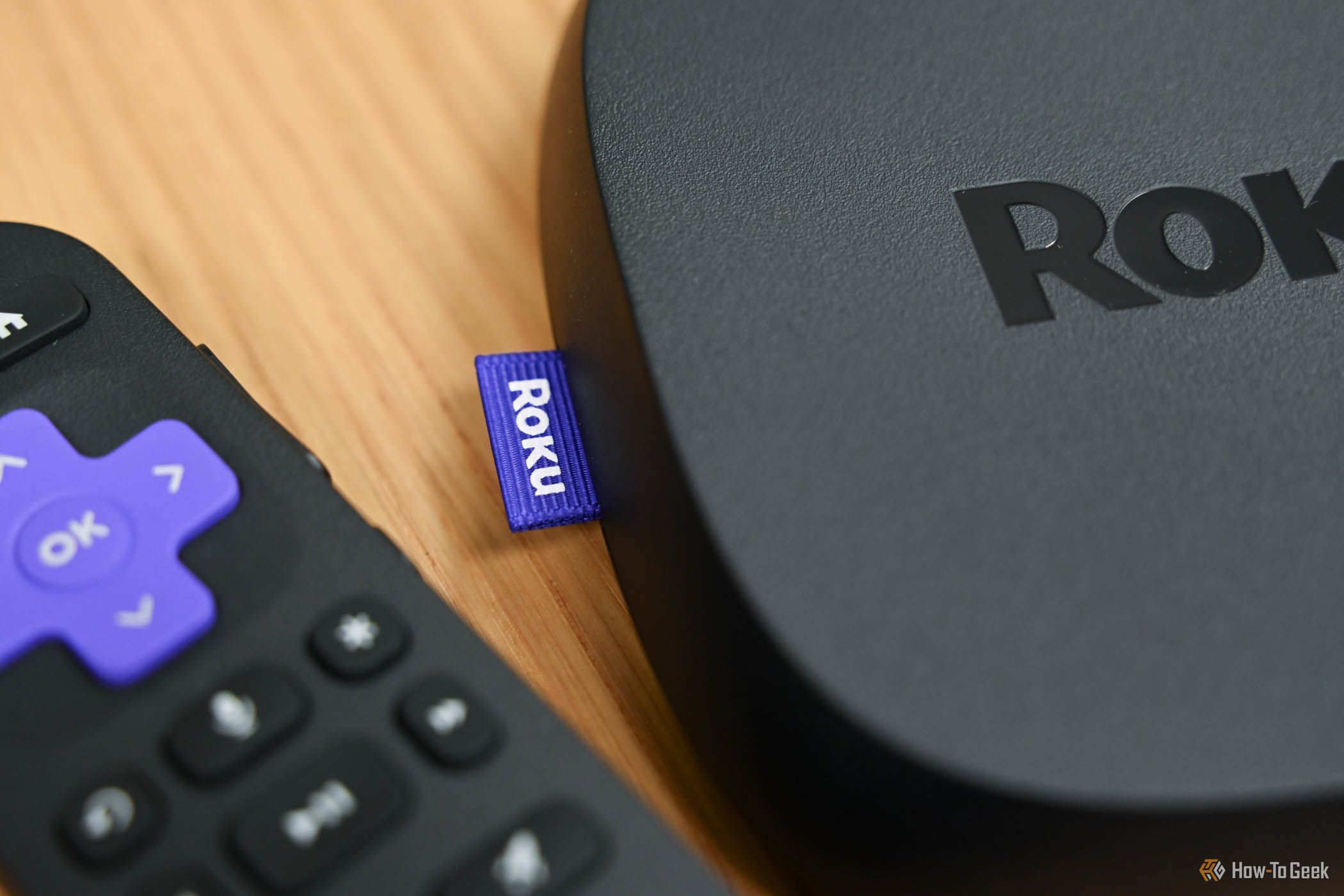Summary
- Invest in a quality soundbar like Samsung HW-Q990D for immersive surround sound in small spaces.
- Optimize room acoustics with furnishings and decor to enhance audio quality and reduce sound wave issues.
- Choose and position speakers carefully to maximize sound projection and create an ideal listening experience.
Just because you live in a small space, like a cramped apartment, doesn’t mean you can’t enjoy an expansive surround sound experience. Here’s how to get that big sound.
Invest in a Great Soundbar
Far more than a rectangular chassis packed with tweeters and woofers, the best soundbars can function as complete replacements for a much larger home theater system.
For those of us living in apartment buildings, options are limited when it comes to home audio (especially if you want to stay in the good graces of your neighbors). And even if you own a home, going all in on a wired surround sound can be expensive and laborious. That’s why soundbars serve as a solid middle ground between the small speakers built into your TV and a 9.1.2 Dolby Atmos setup. Plus, you’ll be amazed at what some of the best soundbars are capable of! Let’s look at the Samsung HW-Q990D Dolby Atmos soundbar as an example:
At first glance, you’re probably thinking this humongous soundbar that comes with two rear speakers and a wireless subwoofer is totally overkill for your living room. That might be the case for some of us, but if you’re looking to create immersive surround sound in a confined space (while still respecting other tenants), this Samsung product is an excellent choice. Not only does the soundbar feature up-firing and side-firing speakers, but the rear speakers have up-firing drivers, too.
When it comes time to watch movies in Dolby Atmos, the HW-990D is able to lean on every speaker to envelop you in three-dimensional sound. But when it’s after midnight, and you still want to use your Samsung soundbar, you can use the Private Listening feature (accessible via the Samsung SmartThings app) to send all audio to only the rear speakers.
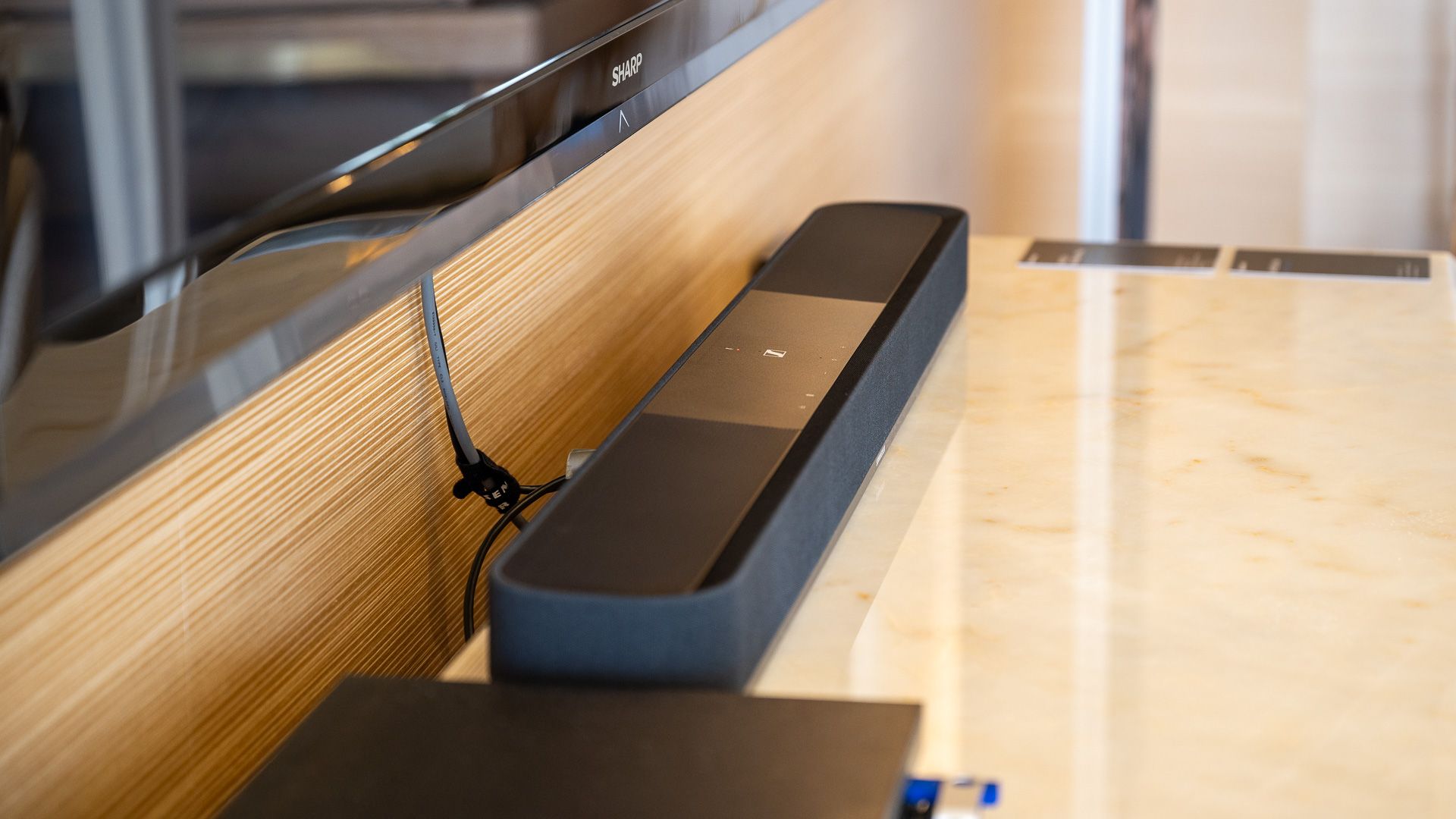
Related
Upgrade that lousy built-in TV speaker to a system that will breathe new life into your home movie nights.
Yes, the Samsung HW-Q990D can be just as pricey (if not pricier) as a wired surround sound. Fortunately, if you’re working with a smaller budget, you can find midrange and premium soundbars, many with Dolby Atmos capabilities, for less than $1,000.
Optimize Your Room Acoustics
Whether you go with a soundbar or a wired surround sound, your movie-watching chamber is only as good as the drywall, hardwoods, carpeting, furniture, and home decor that accompanies it. Sound waves are susceptible to environmental acoustics, so it’s no surprise that an audio system placed in a room void of furnishings can sound totally different when set up in a space with some couches, curtains, and an area rug.
Fortunately, working with a smaller home theater space, to begin with, is actually a pro when it comes to dialing in the optimal room tone.
So, let’s say you’ve got a system like the aforementioned Samsung HW-Q990D up and running, but your TV room has just two recliners, a tile floor, and windows with blinds. Sound waves are going to bounce around like crazy in this kind of space, but we have a cheap solution in mind: run to Walmart and buy a few sets of curtains and a small rug you can pop in front of your recliners (yes, you can even get the SpongeBob one).
Curtains and carpeting do a nice job at controlling sound wave activity, as do simple home decor items like wall-hung art prints and photos. You can also invest in more serious gear like acoustic panels and bass traps to wrangle in sound waves and reduce vibrations from that beast of a subwoofer your system came with.
Pick the Right Speakers (and Position Them Carefully)
You’ve decided to go with traditional passive speakers for your home theater setup. I applaud you, dear friend. You even had the wherewithal to invest in a couple of acoustic panels for your small movie den! But now you’re faced with a new challenge: what kind of speakers should you buy, and how should they be positioned?
Every speaker has a “sweet spot,” regardless of its shape, size, and engineering. And while no one listener is going to experience audio the same way, generally speaking, you want your speakers to be projecting sound waves as close to your skull-center as possible (or smack-dab between your ears). Most conventional home theater setups are designed to do just that by way of three front channels — a left, center, and right — and two rear channels, ideally angled toward the back of the main seating area.
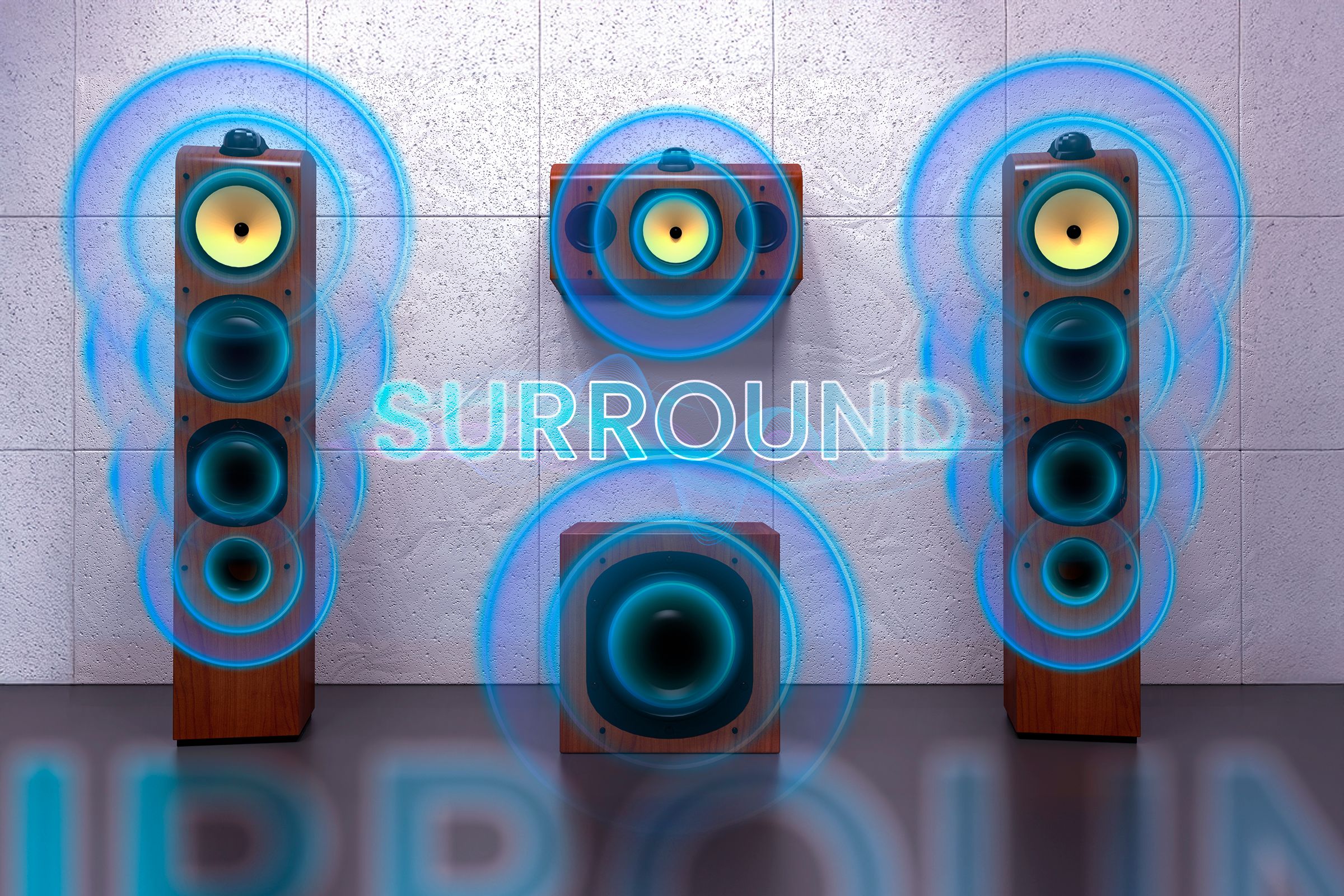
Related
Are Wireless Surround Sound Speakers Worth the Expense?
One of the big pitfalls of full surround sound is all the cable management you need to deal with to avoid tripping hazards and unsightly dangling. Wireless surround systems are available, but they come at a premium. Do you think they’re paying extra for?
But depending on the speakers you’ve purchased, you may not even need a center or rear speakers. Let’s say you splurge on a pair of Bowers & Wilkins floor-standing speakers and use them exclusively for stereo and down-mixed surround sound. A premium set of floor-standers from a renowned audio brand will likely generate a larger sweet spot, thanks to things like advanced driver materials, reinforced cabinets, etc.
If you’d like to keep a true surround sound on the table but can’t afford front-facing floor speakers, you’d be shocked at what a great set of bookshelf speakers on speaker stands or a TV stand can do in a smaller space. And if you’re thinking about mounting speakers on the wall, investing in a pack of ball-and-socket mounts allows you to position them at whatever angle works best for your home theater.
Spend Some Time With Your AV Receiver
Owning and operating an AV receiver is trending toward “lost art” territory. Soundbars are partly to blame for this, but for those home theater connoisseurs who swear by passive speakers with an amplifier, an AV receiver is often a must. On the plus side, an AV receiver delivers the kind of audio processing, settings, and customizations that most soundbars can only dream of.
Your AV receiver is an instrumental tool in filling your small space up with as much audio as possible without said decibels becoming overwhelming to the ears. Receiver brands like Denon, Marantz, and Onkyo offer a range of EQ settings for whatever speakers you have wired to the receiver’s built-in amplifier. Speaker output and size are just a couple of manual adjustments you can play with to dial in a bigger (or smaller) sound for your listening space.
Many receivers also come with a calibration microphone for honing in on the ideal system sound based on your room’s acoustics. You can also find these calibration tools built into premium soundbars, including the Samsung HW-Q990D and Sonos Arc Ultra.
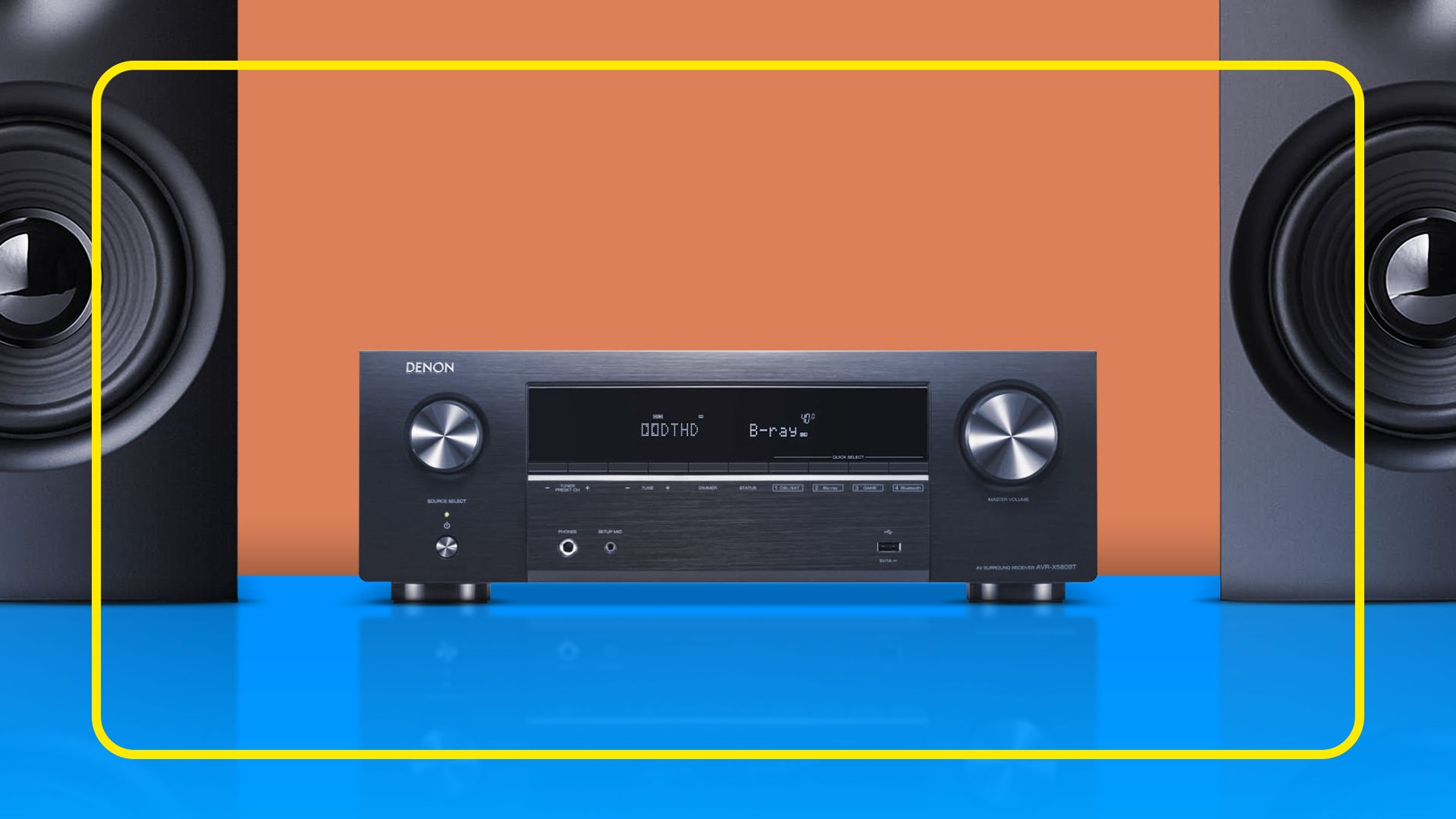
Related
Do You Really Need an AV Receiver? A Look at Standalone Options for Home Theater Audio
You don’t necessarily need an AV receiver.
If you’ve spent a big chunk of change on a pair of floor-standing speakers, and this stereo configuration is all you can afford, many AV receivers have audio presets designed for stereo playback. Look for features like “Pure Direct Mode,” which bypasses a few parts of the audio processing chain to deliver a wider soundstage. This type of setting is particularly nice for hi-fi enthusiasts who want to achieve sound quality that’s as close to true analog as possible.
Ensure Your Components and Cables Are up to Snuff
Your home theater system is only as good as the sources you feed it. Regardless of the soundbar or speakers you own, if you’re not watching movies or shows (or playing video games) encoded for surround sound, your soundbar or AV receiver doesn’t have much audio information to work with.
Fortunately, most modern components (e.g., streaming devices, game consoles, 4K Blu-ray players) support the latest audio standards, including surround formats like Dolby Atmos and DTS:X. But even if you own these devices, you’ll also need to make sure they’re hooked up with the AV cables that will allow Product A to shake hands with Product B.
Up until Dolby Atmos arrived, you could run most surround sound systems with nothing but a digital optical connection. But formats like Atmos need a lot more bandwidth to work with. This is why you can’t even get Atmos sound if you’re not an HDMI cable with fast enough transfer speeds.
A Lack of Space Shouldn’t Translate to a Lack of Sound Quality
Living spaces are getting smaller and smaller, which makes it all the more important to stay on top of the latest AV trends to maximize whatever footprint your TV and speakers are left to work with. As technology advances, smaller speakers, and smarter software allows for the sound of the cinema to fit inside spaces you might never have expected.

